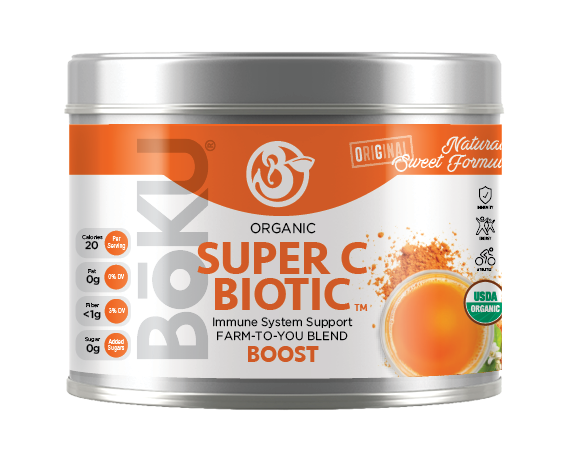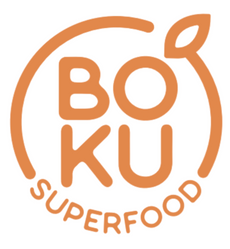
When you think of "antioxidant", quick ... what comes to mind? Probably not glutathione, resveratrol, superoxide dismutase, or CoQ10. Ask anybody and chances are that 9 out of 10 will say vitamin C.
Sure, vitamin C plays a crucial role in supporting the immune system. But there’s far more to this nutrient than scavenging free radicals that can harm your health.
Here are some other critical roles water-soluble vitamin C plays:
- Facilitates iron absorption.
- Participates in enzymatic reactions to form collagen and hormones.
- Regenerates α-tocopherol (a form of vitamin E).
- Relaxes blood vessels.
- Reduces uric acid levels.
- Strengthens the skin’s barrier.
- Boosts white blood cell production.
- Supports cognitive function.
After reading these possible benefits, are you tempted to fish out from your pantry the vitamin C supplement that’s been gathering dust?
Synthetic Vitamin C vs. Whole-Food Vitamin C
Trash your vitamin C supplement. That’s because it probably contains synthetic vitamin C (ascorbic acid).
There are a few problems with synthetic vitamin C.
First, synthetic vitamin C is isolated; it does not contain the various other phytonutrients that your body’s receptors recognize when you ingest it. (Your body does not produce vitamin C on its own; the nutrient needs to be obtained from external sources.)
Your body won’t readily absorb synthetic vitamin C as easily as it does from natural sources. The nutritional cofactors of vitamin C, that is, the various polyphenols and other antioxidant compounds, are missing from synthetic supplements.
Another problem with many synthetic vitamin C supplements is that they are derived from GMO corn and may contain industrial solvents.
In light of this, should you have a glass of orange juice instead of taking a synthetic vitamin C supplement?
Not necessarily. The high amount of sugar in orange juice blocks some of the vitamin C from entering your cells. This results in a lower absorption rate.
Whole fruits and vegetables are the most superior form of vitamin C. Research shows that ingesting vitamin C from whole food is preferable because of the “numerous other macro- and micronutrients and phytochemicals, which will confer additional health benefits.”
The Most Delicious Vitamin C Drink
As part of our mission to provide the most convenient, tastiest and nutrient-dense products on the planet, we were determined to create the best vitamin C powder.
The result is Super C Biotic, a tangy, orange-tasting powder that supports gut health and the immune system.
A product that's been in development for 5 years, Super C Biotic has only 2 grams of sugar (no added sugars), contains over one thousand percent (1060)% RDA of full-spectrum, whole-food vitamin C per serving, 20% daily value of vitamin A and 5 billion colony forming units of probiotics.
Acerola Cherry

Second only in vitamin C quantity to Camu Camu, which tastes terribly bitter in a drink, acerola cherry (Malpighia emarginata) contains over 150 phytonutrients such as carotenoids, phenolics, anthocyanins, and flavonoids.
Acerola cherries contain 50–100 times the vitamin C than that of an orange or lemon. In research studies, acerola demonstrates the following:
- Exhibits high antioxidant capacity
- Possesses antimicrobial properties
- Supports healthy liver function
- Contains anti-aging properties
- Encourages healthy blood sugar levels.
Research also shows that the vitamin C in acerola is better absorbed by humans than via synthetic ascorbic acid.
Considered a super fruit by researchers, acerola cherry also contains pro-vitamin A (beta carotene that converts into vitamin A) as well as vitamins B1 and B2, niacin, albumin (a protein that prevents fluids in your bloodstream from leaking into other tissues), iron, phosphorus and calcium.
Incan Berries, aka Goldenberry

Incan berries, aka Amla Fruit, Goldenberry (Physalis peruviana L.) or Gooseberry, comes from the Andean region of South America, and for centuries was used by Inca warriors to sustain them in battle. A study in Food Research International refers to goldenberry as a highly functional fruit.
Containing vitamins A and C, potassium, phosphorus and calcium, goldenberries are loaded with antioxidants, including polyphenols and carotenoids, which help support the immune system and contribute greatly to overall health.
Goldenberries are actually a bit of a misnomer. Rather than being true berries, the marble-size tart fruit is more closely related to the tomato.
Like tomatoes, goldenberries are rich in carotenoids, which benefit eye health and vision as well as help prevent systemic cellular damage. Recent studies show a direct correlation between intake of carotenoids and healthy heart function.
And research on goldenberry suggests this super fruit may help support healthy inflammation levels and slow the digestion of carbohydrates, preventing them from quickly metabolizing into simple sugars.
Bacillus Coagulans Probiotic

Dr. BJ Adrezin, BōKU Superfood formulator, chose this friendly, spore-producing probiotic among all other strains because it is dairy-free and extremely stable, which means it can survive the harsh, acidic environment of the stomach and colonize in the GI tract—leading to more good bacteria in your gut and colon.
A review in Beneficial Microbes says this bacteria “has therapeutic effects on intestinal disorders, such as acute diarrhea, irritable bowel syndrome, antibiotic-related diarrhea, constipation and colitis.”
More good news about this probiotic: A large number of clinical observations demonstrate that B. coagulans is safe and non-toxic.
Where To Buy Super C Biotic
An impressive trio of immune-supporting ingredients in a delicious powder loaded with full-spectrum vitamin C … you’re going to love it!
Super C Biotic is not available in stores. The best place to buy it is right here on the BōKU Superfood website. Click the image below to get it.
References:
www.ncbi.nlm.nih.gov/pmc/articles/PMC6098779/
www.ncbi.nlm.nih.gov/pmc/articles/PMC4375240/
www.ncbi.nlm.nih.gov/pubmed/20167063
www.pubmed.ncbi.nlm.nih.gov/31190556/
www.ncbi.nlm.nih.gov/pmc/articles/PMC3847730/


